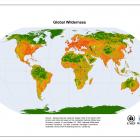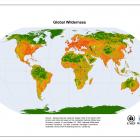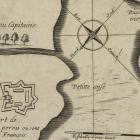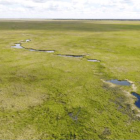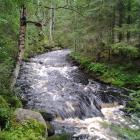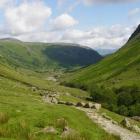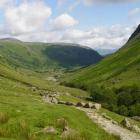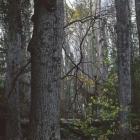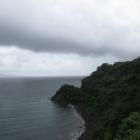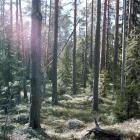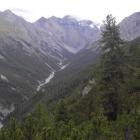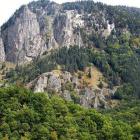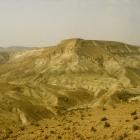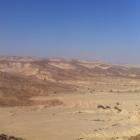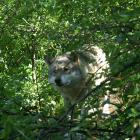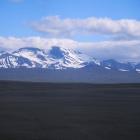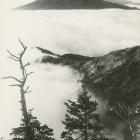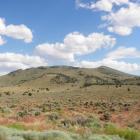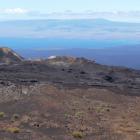Bundok—Filipino
The Tagalog word bundok translates literally as “mountain,” but its larger meaning as wilderness bears the inscription of global forces of war and empire.1 Bundok is plentiful in the Philippines. A volcanically active archipelago, the nation consists of a cluster of hundreds of tiny islands, many little more than a rocky peak, interspersed with large islands where steep-sided, forested ranges loom over the coastlines.2
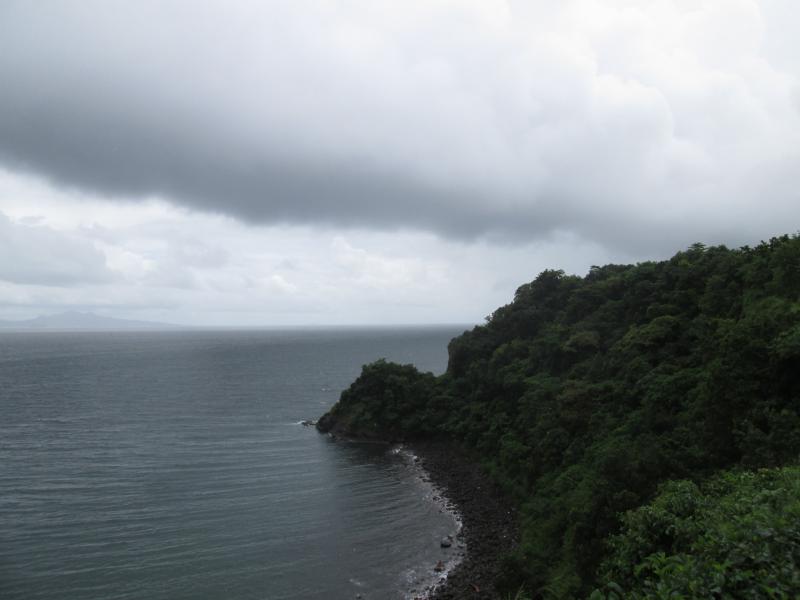
Corregidor Island with Mt Mariveles (Luzon) behind, Manila Bay. Photograph Emily K. Brock, 2013.
Corregidor Island with Mt Mariveles (Luzon) behind, Manila Bay. Photograph Emily K. Brock, 2013.
 This work is licensed under a Creative Commons Attribution-NonCommercial-ShareAlike 3.0 Unported License.
This work is licensed under a Creative Commons Attribution-NonCommercial-ShareAlike 3.0 Unported License.
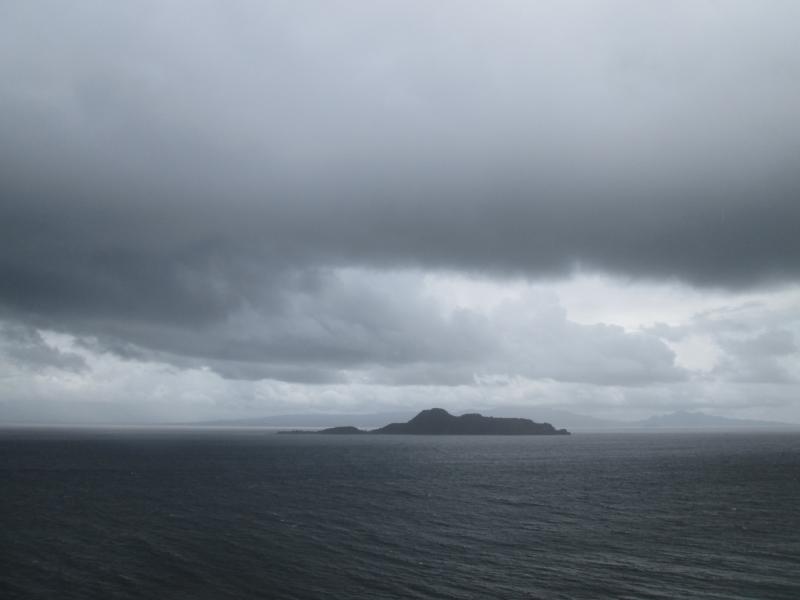
Caballo island with Mt Palay-Palay (Luzon) behind it, as seen from Corregidor Island. Photograph by Emily K. Brock, 2013.
Caballo island with Mt Palay-Palay (Luzon) behind it, as seen from Corregidor Island. Photograph by Emily K. Brock, 2013.
 This work is licensed under a Creative Commons Attribution-NonCommercial-ShareAlike 3.0 Unported License.
This work is licensed under a Creative Commons Attribution-NonCommercial-ShareAlike 3.0 Unported License.
In the 1898 treaty ending the Spanish-American War, Spain ceded the Philippines to the United States despite the fact that the islands had declared their independence the previous year. The American military’s attempts to take possession was quickly met with violent resistance from a populace ready to throw off three centuries of colonial rule. Many American troops in the Philippines had begun their combat careers in the so-called Indian Wars, domestic suppression of tribal insurgencies on the wide-open prairie lands of the Great Plains. While American forces acclimated to prairies might still feel in control along the edges of an island, they found they were less safe as they proceeded inland, up into the dense forests and rugged terrain of an island’s mountains.
In any military conflict, topography and environment shape war, but importantly, the experience of war also shapes our perceptions of the environment. During conflicts in the Philippines, bundok could quickly become contested area, unpredictable and difficult to navigate for both invaders and defenders. While shorelines could be easily controlled by outsiders with naval superiority, the bundok, on large islands and small, held resistance forces employing guerrilla tactics. The centers of Philippine islands were thus the peripheries of American control.
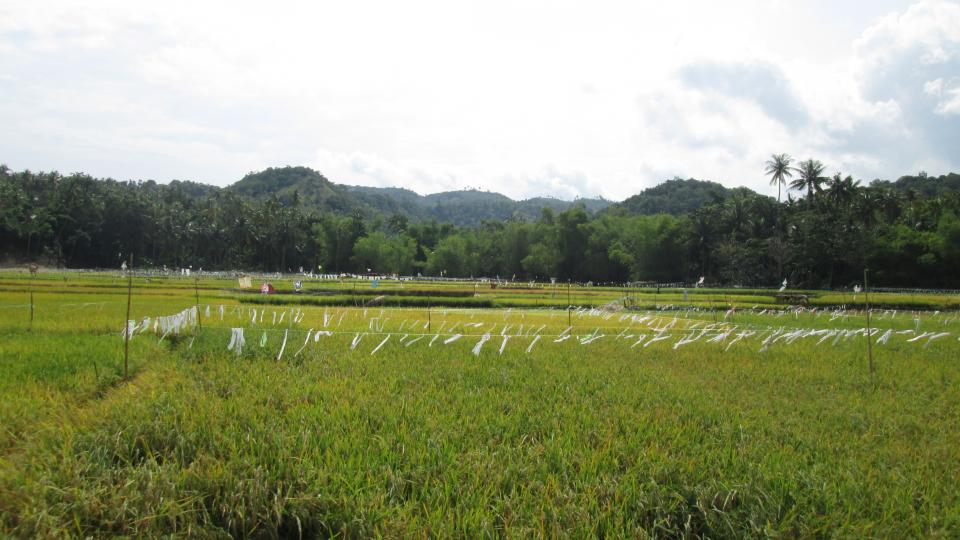
Bundok behind rice fields near Lazi, south shore of Siquijor Island. Photograph by Emily K. Brock, 2013.
Bundok behind rice fields near Lazi, south shore of Siquijor Island. Photograph by Emily K. Brock, 2013.
 This work is licensed under a Creative Commons Attribution-NonCommercial-ShareAlike 3.0 Unported License.
This work is licensed under a Creative Commons Attribution-NonCommercial-ShareAlike 3.0 Unported License.
Bundok, with its connotations of jungly impenetrability, remoteness, and unpredictable violence, became the military slang word boondock. For these soldiers, boondock was the alien landscape, unknowable and violent as well as ecologically foreign. Once away from the Philippines, American troops applied boondock to landscapes of combat encountered worldwide. By the Second World War, the term was cemented in military language, as in boondockers, the field boots issued to Naval and Marine personnel.
Brought into nonmilitary use by returning soldiers, boondock was soon stripped of its military connotations. Boondock transformed into a descriptor of mysterious and remote, but not necessarily hostile, hinterlands. Today, the American term boondock retains little of the specific ecological and topographical descriptiveness that it had in its military context. Boondock’s wilderness today is societal and cultural rather than environmental. The wilderness of bundok, however, remains both mountainous and culturally remote, wild in spirit as well as in ecology.
Notes
1. Well over a hundred indigenous languages are spoken in the Philippine archipelago, but the 1930s Commonwealth government deemed Tagalog, language of the Manila area, a “national language.” Filipino or Pilipino, a standardized form of Tagalog, is the lingua franca of the nation today, with English as the other of the Philippines’ two official national languages.
2. Other Tagalog words which one could translate into English as “wilderness,” include kagubatan, ilang, kawalan, kaparangan, and kasukalan. As is the case with bundok, these terms most literally translate as specific types of landscapes, such as forest, thicket, or desert. Bundok, more than the others, has evolved since the late nineteenth century to evocatively carry meaning of both simple topography and societal remoteness.
What does wilderness mean in your language? Browse “Wilderness Babel” via the map.
Live map showing the location of the languages featured in the virtual exhibition. What does wilderness mean in your language? Browse “Wilderness Babel” via the map.
- Bankoff, Greg. “Wood for War: The Legacy of Human Conflict on the Forests of the Philippines, 1565–1946.” In War and the Environment: Military Destruction in the Modern Age, edited by Charles E. Closmann, 32–48. College Station: Texas A & M University Press, 2009.
- Kramer, Paul A. The Blood of Government: Race, Empire, the United States, & the Philippines. Chapel Hill: University of North Carolina Press, 2006.
- Tucker, Richard P. Insatiable Appetite: The United States and the Ecological Degradation of the Tropical World. Berkeley, CA: University of California Press, 2000.



